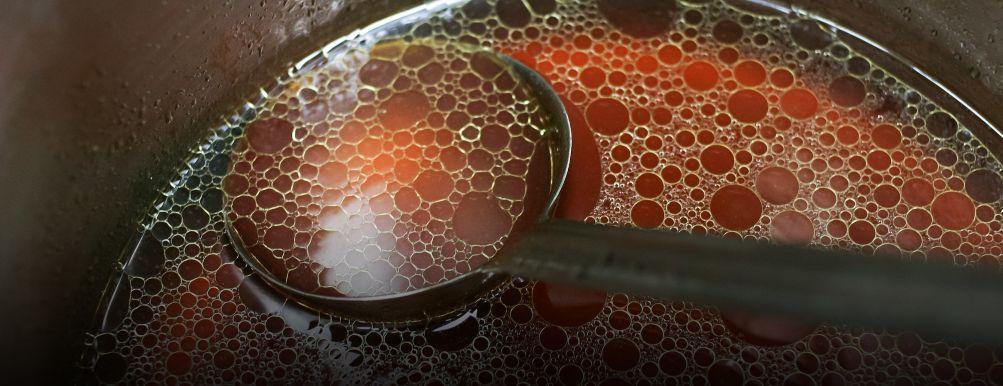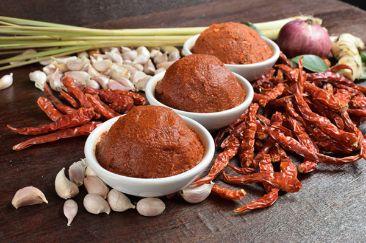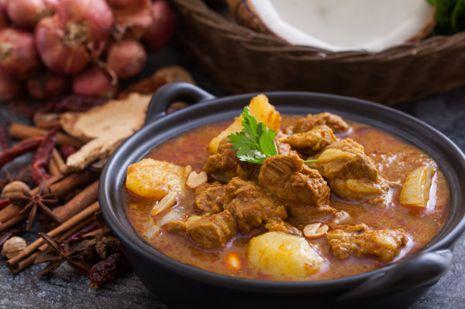- Home page
- Dive into cooking methods 101
- More tips up our sleeve
- Curries done right
- How to make your own Beef, Lamb, or Veal stock
Nothing adds flavour and depth to your sauces, soups and casseroles better than a really good stock and the best stock is homemade! Making your own is a simple process and it will make your meals taste like they have come straight from a restaurant kitchen.
Stock does take a little time to make, but time is its major ingredient. You can go about other things as stock simmers away and the richness from the meat and bones slowly yield their wonderful flavours. Depending on quantities a batch of stock can take up to 3 hours to cook.
About 2 litres of water and 750g of meat and bones will yield around 1.5 litres of stock.
Veal stock
A fully flavoured, richly coloured stock made by roasting the veal bones and meat until they are deeply golden before simmering. This stock is great to use for rich soups like French onion soup, or for making sauces.
Beef stock
Easy to make. Use meaty beef shanks or beef oxtails, and add some extra diced beef shin for the best flavour. Beef stock makes a delicious base for all types of dishes from minestrone or meaty soups to casseroles.
Lamb stock
Not often called for in recipes but it is good for making gravy for a lamb roast, or for using in braised lamb dishes. Use cuts like lamb forequarter chops or lamb shanks. Simmer the bones and meat for about 2½ hours. Enhance lamb stock with a little white wine, or chopped tomatoes to cut back the richness. After straining and cooling, refrigerate the stock for several hours or overnight. Any fat can then be lifted from the top.
How to cook a rich stock
When cooking a beef, lamb or veal stock, the steps are essentially the same. Use the veal steps below and adapt them for lamb or beef.
Steps for a rich veal stock
Step 1 – Put 1.5kg veal bones and few halved brown onions and halved carrots into a large roasting dish.

Step 2 – Roast at 220°C until they are well browned. Turn them a few times and take care that they do not burn, as this will cause the stock to taste bitter. Transfer the bones to a large heavy-based stockpot. Fill with enough cold water so the bones are covered by about 5cm of the water

Step 3 – Pour off any fat in the roasting dish. Deglaze with a little wine or water. Scrape up any sediment and cook to reduce pan juices by half. Add to the stockpot.

Step 4 – Bring the stock to the boil very slowly. Greyish scum will rise to the surface as the stock comes to the boil; use a wide ladle or large spoon to skim it away.

Stock tips
- A heavy-based pot gives an even heat and allows your stock to simmer gently. A tall stockpot is a good choice as it slows evaporation. The capacity should be about 8 litres.
- Always start with cold water, don’t be tempted to speed up the cooking process by using hot water (hot water will make a meat stock cloudy or murky).
- Don’t add too much water to the stock ingredients. Cover the bones with enough cold water so they are covered by about 5cm of water. Additional water is only needed when or if it evaporates below the level of the ingredients before the stock is fully cooked.
- Simmer stock, never boil it for any length of time. A clear stock is fresh and flavoursome while a cloudy stock has murky flavours and is greasy, it’s the slow simmering process that will deliver a clear, well-flavoured stock.
- Cooking times for stock vary. Stop cooking the stock when there is no flavour left in the stock ingredients. Test by tasting a small piece of meat.
- Strain stock gently. Gently pour the stock through a fine strainer or colander.
- Cool stock without delay so it does not spoil
Never leave stock in a stockpot overnight. Stock must be cooled quickly and stored in the fridge.
An easy way to do this at home is to place the strained stock into another large deep-sided saucepan. Put the plug in your sink, place a couple of bricks in the sink and place the saucepan on the bricks. Fill the sink with cold water and ice cubes. Stir the stock a few times to help it cool.
As soon as stock is well cooled, transfer it into airtight containers, keeping what you need immediately in the fridge and freezing the rest.
Storing the stock
Stock stores well for up to 4 days, covered in the refrigerator. You can freeze stock for up to 4 months. Freeze in small containers (1 to 2 cup quantities are a useful amount).
To make a demi glace or glace from veal or beef stock
Double cook a small quantity of beef or veal stock for superior depth of flavour. Take about 2 cups of strained stock and simmer until it has reduced by one third to make a demi glace. Reduce it further still to make a glace – the stock should be cooked until it is reduced by half, to a syrupy consistency. Freeze both styles in ice cube trays. These homemade ‘stock cubes’ can used to enhance sauces, risotto, or any dish that needs a little oomph.
To clarify stock
Clarifying stock will leave it very clear and completely free of fat. An easy way is to add a few eggshells (make sure the eggshells are not broken up too finely) to the stockpot after skimming. The shells will help keep the stock clear and will drain away with the bones and aromatics when the stock is strained.



